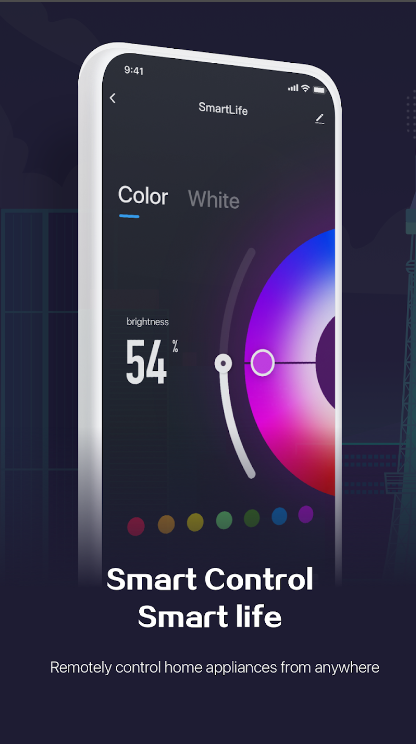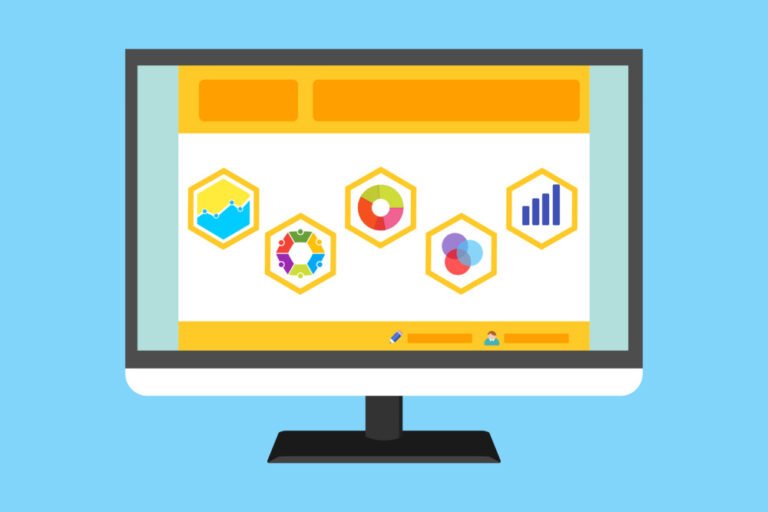Environmental research has entered a new era where decision-making is being revolutionized by integrating artificial intelligence (AI) and big data technologies. The convergence of these advanced technologies is helping to navigate the multifaceted sphere of environmental studies, offering new ways to tackle complex problems.
AI, in particular, is critical in transforming environmental decision-making, enabling a more systematic and informed approach to address challenges.
An example of this is seen in AgroTech, where the dynamics of startup financing from 2012 to 2020 have been analyzed to understand its contribution to the development of food production.
This analysis, backed by AI and big data technologies, has provided invaluable insights into optimizing environmental decision-making in this sector. It demonstrates how AI can lift the veil on complex issues, shedding light on the intricacies of environmental research and paving the way for a new era of decision-making.
The Convergence of Artificial Intelligence and Environmental Research
Artificial Intelligence (AI) has emerged as a powerful environmental research tool, driving innovation and progress. The convergence of these two fields has enabled researchers to leverage AI’s ability to process vast amounts of data and draw meaningful insights, thereby accelerating discovery and innovation in environmental studies.
Moreover, incorporating AI in environmental research has facilitated the development of more robust and effective solutions to complex environmental problems. By harnessing the power of AI, researchers can now navigate the complexities of environmental studies more efficiently, making significant strides toward a more sustainable future.
Decision-Making with AI in Environmental Research
Revolutionizing environmental research through decision-making with AI opens up a world of possibilities, helping us to tackle environmental challenges more effectively. AI technologies, decision support systems, and data sharing have become integral components of environmental research, enabling us to analyze historical data and make informed decisions.
The development of AI is at the core of this transformation, integrating statistical methods and addressing issues of energy consumption and missing data, thereby bringing a new level of sophistication to environmental decision-making.
How AI is Addressing Environmental Challenges
AI is pivotal in addressing environmental challenges, offering innovative solutions, and reducing unintended consequences. By leveraging AI’s ability to process vast amounts of textual information efficiently, we are better equipped to understand and tackle complex environmental problems, paving the way for a more sustainable future.
-
AI in Climate Change Mitigation
The advent of AI and big data has revolutionized environmental decision-making, particularly in climate change mitigation. Advanced data technologies powered by AI enable us to accurately comprehend and predict climatic patterns. AI algorithms can analyze enormous volumes of data, identify trends, and provide valuable insights into the impact of various factors on climate change.
These insights are critical in shaping our strategies for mitigating climate change. For instance, AI can help us optimize energy consumption, enhance the efficiency of renewable energy sources, and develop more effective carbon capture technologies. Thus, AI has transformed environmental decision-making and played a crucial role in our fight against climate change.
-
AI and Biodiversity Conservation
AI’s ability to analyze vast amounts of data and generate actionable insights is immensely beneficial in monitoring and conserving biodiversity. Using AI, we can track wildlife populations, understand their behaviors, and foresee potential threats, enabling timely intervention.
Furthermore, AI can help us develop more targeted and effective conservation strategies. By analyzing data from diverse sources and applying advanced algorithms, AI can identify the most critical areas for conservation, predict the impact of various conservation measures, and help us make informed decisions. Thus, AI is an invaluable tool in safeguarding our planet’s biodiversity.
Implications of Pro-Environment Decision-Making and Green AI
The integration of AI in environmental research carries profound implications for sustainable development. As AI advances, it offers us more sophisticated tools for making pro-environment decisions. Moreover, the concept of Green AI, which emphasizes the development of energy-efficient AI systems, underscores the potential of AI to contribute to sustainability in its applications and operations.
GPT4 – Is It the Key?
As we navigate the complex landscape of AI in environmental research, GPT4 emerges as a potentially game-changing technology. With its advanced natural language processing capabilities, GPT4 holds promise for transforming the way we approach environmental decision-making.
How GPT4 Influences Environmental Decision-Making Processes
GPT4’s influence on environmental decision-making processes stems from its ability to understand and generate human-like text. This ability allows GPT4 to sift through vast amounts of environmental data, identify patterns, and present insights in an easily understandable and actionable format for decision-makers. This way, GPT4 can help streamline the environmental decision-making process, making it more efficient and effective.
Moreover, GPT4’s ability to learn and adapt makes it a powerful tool for dealing with environmental challenges’ complex and dynamic nature. As it absorbs more data and evolves, GPT4 is expected to become even more adept at providing valuable insights for environmental decision-making. Thus, GPT4 stands as a powerful ally in our efforts to address environmental challenges through informed decision-making.
Environmental Applications of Machine Learning
Machine learning’s applications within environmental research are diverse and dynamic, bringing about revolutionary changes in how we comprehend and address environmental impacts. This fusion of technology and ecology is a testament to the era of digital environmentalism, where data and advanced analytics increasingly drive decision-making.
AI-Powered Code Generation as a Paradigm Shift in Environmental Research
Artificial Intelligence (AI) has gone beyond simplistic data analysis to facilitate code generation, signaling a paradigm shift in environmental research. AI-powered code generation offers a more efficient, accurate, and faster approach to analyzing environmental data. This is instrumental in making timely, data-driven decisions that can significantly impact our approach to mitigating environmental challenges.
Ethical issues, however, arise in the context of AI-powered code generation. As we entrust AI with more responsibilities, we must ensure that the algorithms are transparent and unbiased and that the generated codes do not inadvertently harm the environment or violate privacy and security norms. These considerations are critical to upholding the trustworthiness of AI in environmental research.
ML and AI: The Key to Solving Complex Problems and Driving Innovation
Environmental science is inherently complex, dealing with vast amounts of data and various variables. AI and big data have revolutionized this field, enabling more sophisticated analysis and decision-making. With AI’s ability to analyze and interpret vast amounts of data, tackling complex environmental issues in ways we never thought possible is now possible.
Such advancements in science and technology have driven innovation in environmental decision-making, specifically through machine learning (ML) and AI. These tools can process and analyze data at a scale and speed beyond human capabilities, offering new insights into environmental issues. The convergence of data and AI in environmental research can potentially drive significant changes and improvements in the field.
Harnessing Swarm Intelligence for Environmental Problem-Solving
Swarm intelligence, a subfield of AI inspired by the collective behavior of social insects, has emerged as a potent tool for environmental problem-solving. By simulating the cooperative behavior of swarms, we can develop efficient algorithms that can tackle complex environmental issues innovatively and effectively.
Using Nature-Inspired Algorithms in Environmental Issues
Nature-inspired algorithms, a facet of swarm intelligence, offer a unique perspective on tackling environmental issues. These algorithms mimic biological processes to solve complex computational problems, allowing us to understand and address environmental impacts intuitively and holistically. The utility of these algorithms extends to a wide array of environmental challenges, from climate change modeling to biodiversity conservation.
Despite their potential, applying nature-inspired algorithms in environmental research raises ethical issues. As we draw inspiration from nature to design these algorithms, we must respect the intrinsic value of biological systems and ensure that our actions do not negatively impact them. Balancing technological innovation with ethical considerations is imperative for the sustainable application of AI in environmental research.
Future of AI in Environmental Research: Opportunities and Challenges
As we look towards the future, AI in environmental research presents both opportunities and challenges. The potential of AI and ML to provide real-time, actionable insights can revolutionize our approach to environmental conservation, improving human health and the health of our planet. However, using these technologies also poses challenges, including ethical considerations, data privacy issues, and the need for robust regulations.
The Potential of AI in Agriculture
One of the most promising applications of AI in environmental research lies in the field of agriculture. AI can provide farmers with data-driven insights, enabling them to optimize their farming practices, enhance crop yields, and reduce environmental impacts. This blend of AI and agriculture could be a game-changer in ensuring global food security and sustainability.
Bridging the Gap: The Impact of GIS Integration on Machine Learning and Artificial Intelligence in Food Security
Integrating Geographic Information Systems (GIS) with AI and ML has profound implications for food security. GIS provides spatial data, which, combined with ML and AI, can provide comprehensive insights into agricultural trends, crop growth patterns, and potential threats to food security. This integration bridges the gap between spatial data and predictive analysis, enhancing our ability to secure global food supplies.
For example, GIS-integrated AI systems can predict crop yields based on weather patterns and soil conditions, enabling farmers to optimize their farming strategies. Such advancements can potentially revolutionize agricultural practices and contribute significantly to global food security.
Agriculture and Sustainability in the Era of Artificial Intelligence
AI serves as a powerful tool in promoting sustainable agriculture. We can use AI and ML to develop smart farming systems that optimize resource use, reduce waste, and enhance crop yields. Such systems can provide real-time data on soil conditions, weather patterns, and crop health, enabling farmers to make informed decisions and minimize their environmental impact.
However, the successful implementation of AI in agriculture requires careful consideration of ethical and socio-economic factors. It’s essential to ensure these technologies are accessible to farmers across different socio-economic backgrounds and that their use does not exacerbate existing inequalities. In the era of AI, achieving sustainability in agriculture will require technological innovation and a commitment to equity and inclusivity.
Impact of AI on Jobs in the Environment Sector
As AI systems continue to evolve and infiltrate various sectors, their impact on jobs in the environmental sector is noteworthy. AI’s potential in environmental management and resource management is immense. It can process and analyze massive data sources, offering predictive models derived from data, thus revolutionizing decision-making processes. These AI capabilities are particularly significant in areas like forecasting methods vital to environmental research.
AI Revolution – Are We Losing or Gaining Relevance?
With the AI revolution firmly underway, the question arises – are jobs in the environmental sector losing or gaining relevance? On one hand, the development of AI technologies may lead to job displacement. However, on the other hand, the potential of AI to address complex environmental issues could open up new job opportunities. For instance, roles focused on interpreting relevant data and ensuring that AI systems are aligned with environmental goals could become increasingly important.
Furthermore, environmental work relies on AI to create more effective strategies and solutions. Therefore, instead of seeing AI as a threat, it can be embraced as a tool that enhances our ability to protect and manage our environment. The AI revolution is not about replacing human effort but augmenting it to achieve better environmental outcomes. Ultimately, the relevance of jobs in the environmental sector is not diminishing but evolving in response to the advent of AI.
Conclusion: Embracing the AI-Powered Future in Environmental Research
As we reflect on the intricate tapestry of environmental research, the integral role of AI in environmental decision-making comes to the fore. With the convergence of data mining, machine learning methods, and environmental modeling, AI research is opening doors to innovative solutions for environmental protection. The evidence of AI’s impact is already visible in a wide range of research focuses, from climate change mitigation to biodiversity conservation and agriculture to jobs in the environment sector.
The way forward is clear, albeit not without potential risks and hurdles. Human activities have led to myriad environmental consequences, and these complex problems require sophisticated solutions. With its ability to sift through vast amounts of data and find the optimal solution, AI is perfectly poised to tackle these challenges.
But the journey ahead isn’t without its obstacles. There’s a lot to consider, from the potential risks of relying heavily on AI to the need for stringent guidelines, such as instructions for authors using AI in environmental research. However, the benefits far outweigh the challenges.
As we forge ahead, embracing the AI-powered future in environmental research, we have the opportunity to protect the environment and ensure a sustainable future not just for us but for generations to come.













